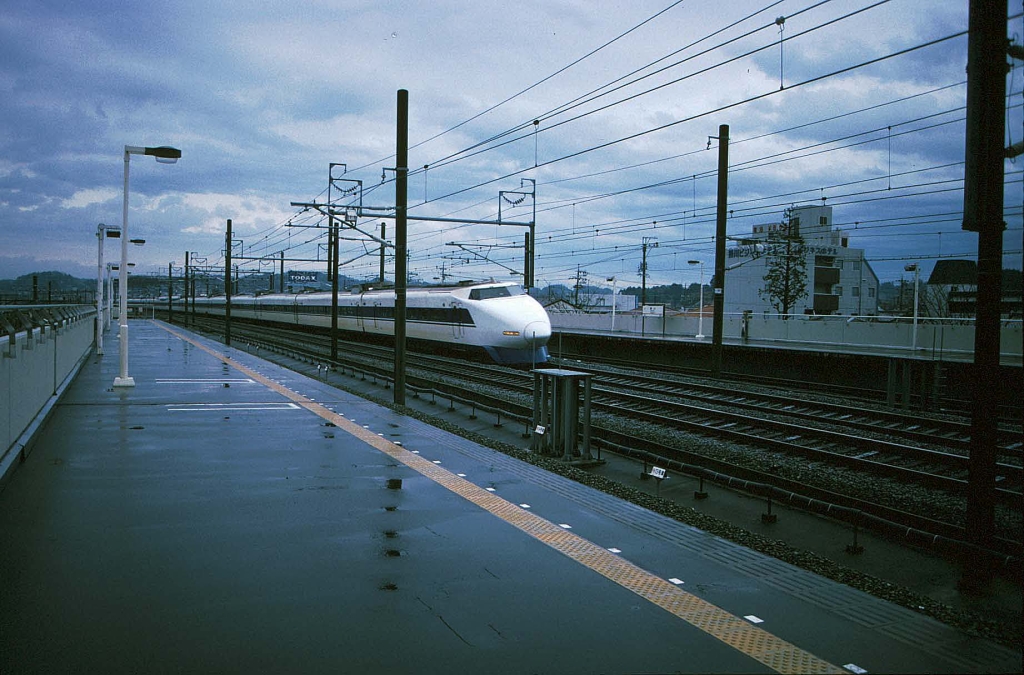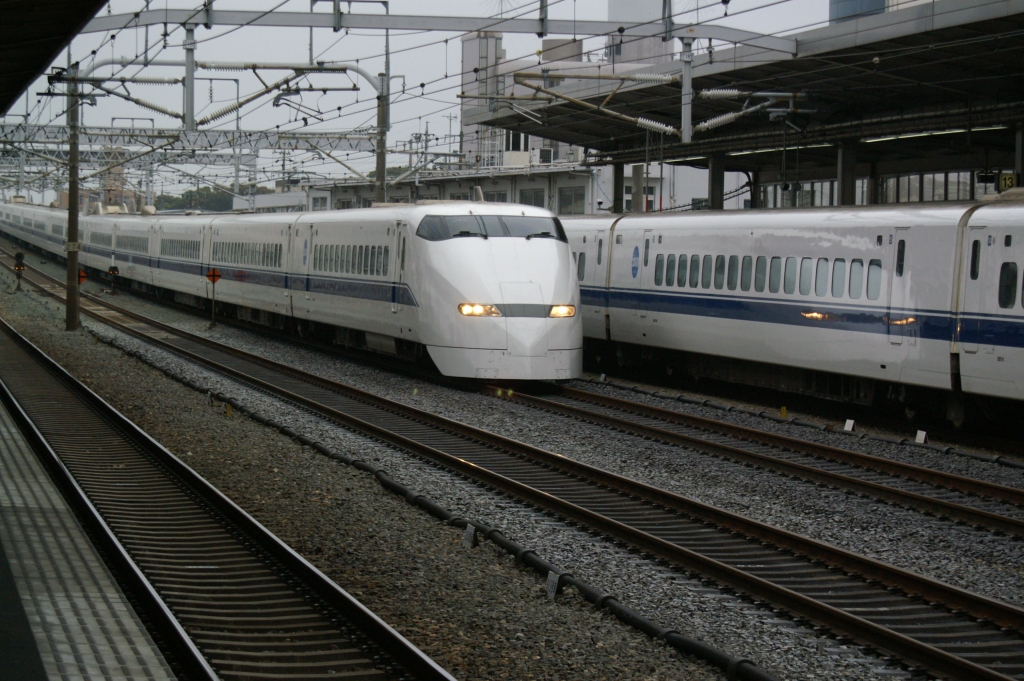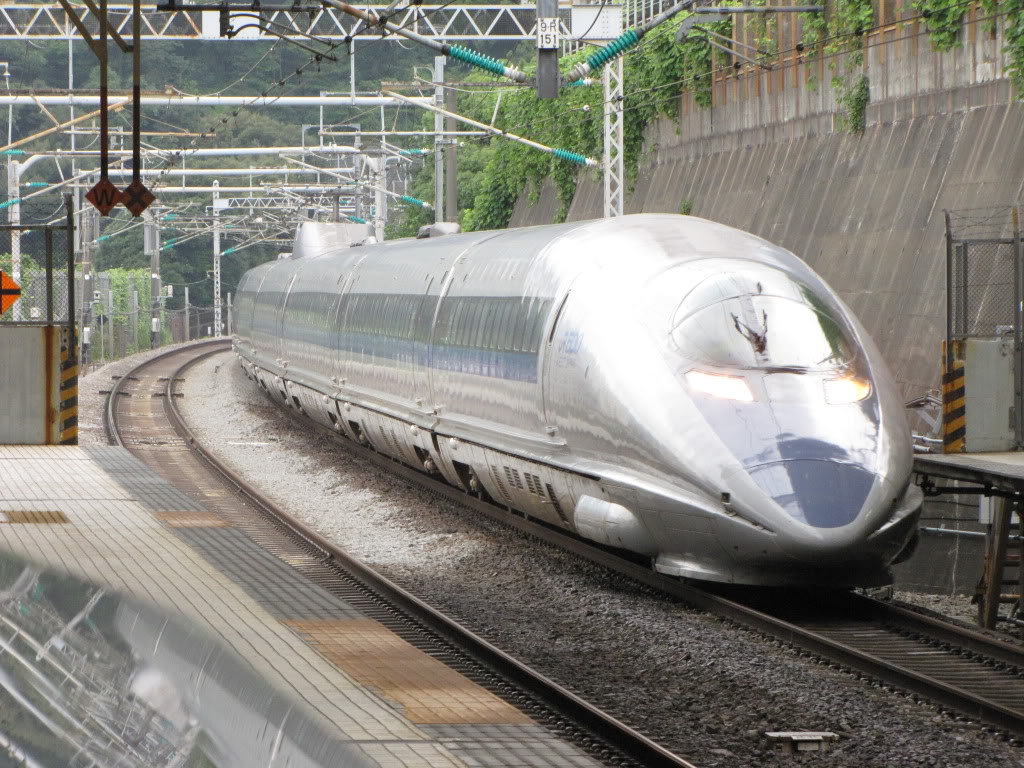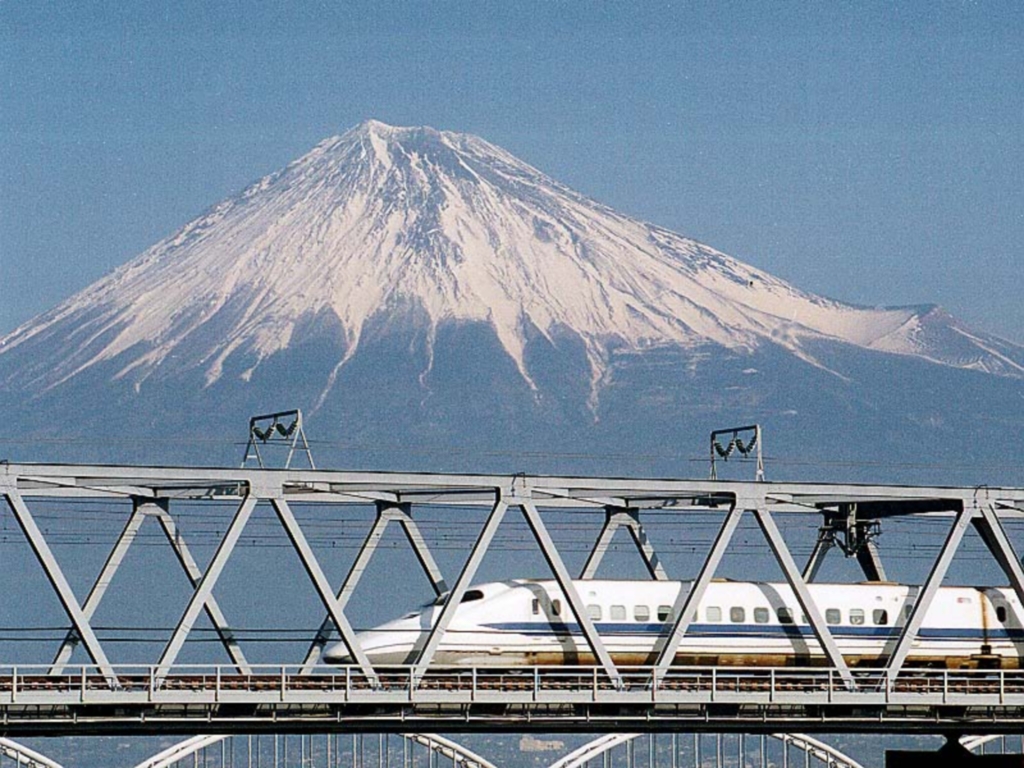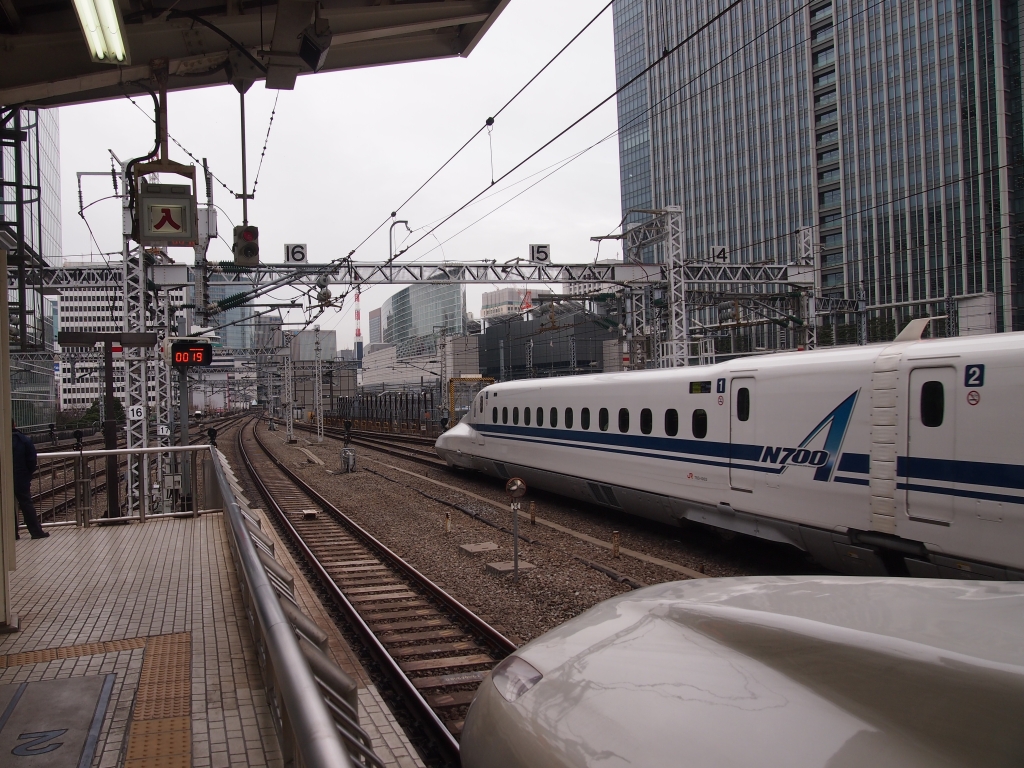To celebrate the 50th anniversary of the commencement of
service on the Tōkaidō Shinkansen this month, a special
larger, contribution of photo's illustrates all classes that
have operated on the World's Pioneer High-Speed Railway
since the 1st October 1964.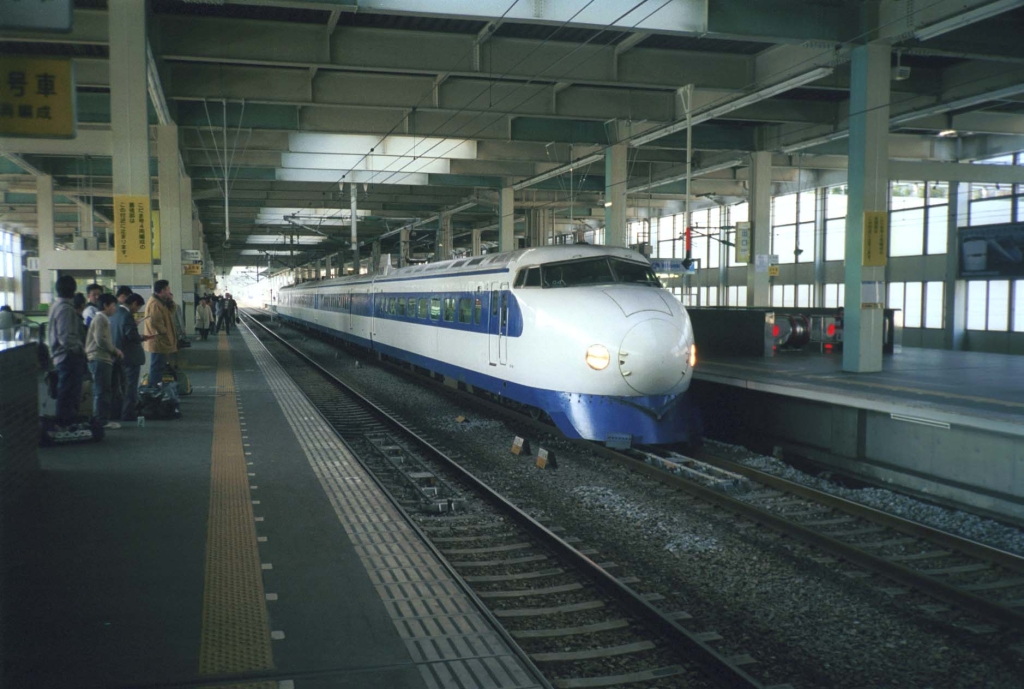
An original 0 Series Shinkansen Set of 4 cars at Hiroshima
on 03/04/1998. By this time many of the 0 Series were no
longer operating the majority of service over the combined
Tōkaidō-Sanyō Shinkansen route. The last 0 Series operated
on the Tōkaidō in 1999. The final set ever operated in 2008.
Photo: Alex Morley
The second generation 100 Series maintained the original
bullet nose styling, albeit with a sharper appearance. This
100 series set is shown passing through Kakegawa on 02/04/1998.
The 100's finished service on the Tōkaidō in 2002. These services
had pioneered the use of double-deck cars in high-speed rail with
the 'Grand Hikari' service. The final runs of the shortened 4 car
sets occured on the Sanyō Shinkansen in 2012.
Photo: Alex Morley
The 300 series styling and facilities saw a break from the
traditional nose styling and were the first sets released into
service following the break of Japan National Railways.
Entering service in 1992, they also were without the dining
cars that the previous two classes offered. This 300 series
set is shown passing through Toyohashi on 10/04/2005
while en-route to Shin-Ōsaka.
Photo: Alex Morley
Popular with rail-fans though not with operator JR Tokai,
the JR West developed 500 series was a dramatic change
from the previous designs with a tubular car shell, T shaped
pantographs as well as yaw-dampers to improve ride quality & slightly
different door arrangements. These German designed/Japanese built sets
were removed from service over the Tōkaidō during 2010, however they are
still in service in Western Japan over the Sanyō Shinkansen. This Tōkyō
bound service was seen roaring through Atami on 17/07/2009.
Photo: Anthony Leith
In recent times, the 700 series has been the more ubiquitous
class of set operating over the length of the Tōkaidō-Sanyō
Shinkansen route. The class introduced the 'duck-bill' appearance
to Shinkansen sets which are designed to reduce the piston effect
encountered on high-speed railways while at top-speed. The
above view near Shin-Fuji on 01/01/2003 is probably one of the most
widely known scenes of Japan globally. These sets are still in service
over the full route, but are now usually found on Hikari or Kodama services
rather than the fastest 'Nozomi' express services.
Photo: Hiroshi Naito.
The N700A (right) is the latest evolution of the N700 series (left) which is an evolution of the
700 series above. These are the newest sets on the route and entered service from 2007 &
2013 for the N700A's. The visually similar N700's together with the N700A's now operate most
of the Nozomi services and many of the Hikari's. N700's have a tilting mechanism that
enables them to maintain a higher speed through curves and an overall lower average journey
time that is now almost half that from when the line first opened in 1964.The above two sets
await their next turn of service at Tōkyō on 18/02/2013.
Photo: Kiyoshi Jinno.
